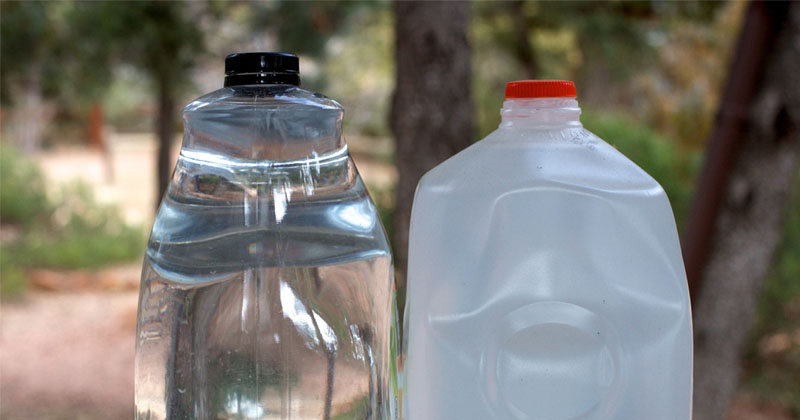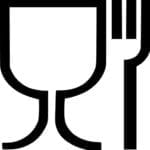FOOD GRADE BUCKETS . . .
To identify food grade buckets, flip a bucket over and look for the recycling number on the bottom. If it's labeled "1," "2," "4," or "5," the bucket is safe to store food in. You can also check the bottom of the bucket to see if there's a cup and fork symbol, which means the bucket is safe for storing food.
Not quite.
PETE bottles are indicated by the
1 in the recycling triangle at the bottom of packages. This is polyethylene terephthalate. Most commonly used for soda and juice bottles, PETE containers are also used for ketchup, water, and peanut butter. The lid goes back on and seals securely enough to be airtight so that oxygen absorbers can also be used to preserve food better. These containers work well for whole grains, dry beans, rice, and small pasta shapes. Unfortunately, they are still a bit permeable. That's why soda goes flat in them over time. Anything with the potential to become rancid in storage, like rolled oats, oil, or nuts, will begin doing so within two to three years. So PETE containers shouldn't be used for truly long-term food storage. PETE is also a rather thin plastic, another reason it's less desirable for long-term food storage, but even then PETE bottles are pretty much insect and rodent proof.
HDPE,
high-density polyethylene, is indicated by the 2 in the recycling triangle. Unfortunately, most HDPE is recycled, so the HDPE symbol alone is not sufficient to determine whether the plastic is food grade. You also need to look for some other indication, like the words food grade or food safe, or the fork and cup symbol near the recycling symbol to show that it is, in fact, food-grade. HDPE plastics are often used for large food grade buckets as well as milk, juice, yogurt, and margarine containers.
LDPE, low-density polyethylene, is designated by the number
4 in the recycling triangle. It is more flexible and often used for plastic wraps and bread bags. It is used in manufacturing the bottles for some cooking oils.
PP, polypropylene, is designated by the number
5 in the recycling triangle. A more rigid plastic used to manufacture food grade buckets, it is also used to make syrup, yogurt, margarine, and deli soup containers.
All of the above plastics are deemed safe for reuse for food. However, all may leach chemicals if they are heated, and none should be reused if they didn't hold food in the first place. Also, milk jugs should never be reused for food or water storage purposes. They break too easily. Furthermore, never use biodegradable plastics for long term storage. They're designed to break down over time.
More at the link.
Re-Using Glass and Plastic Bottles for Food and Water Storage


